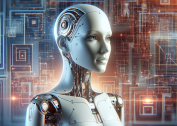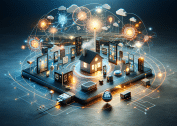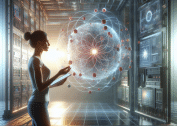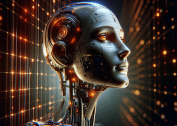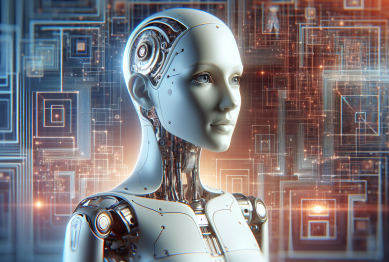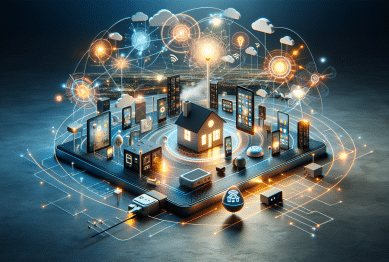Artificial intelligence is weaving itself into nearly every part of daily existence. From smarter devices to intuitive online recommendations, modern AI impacts how you learn, work, and interact. Dive into this guide to discover just how AI and machine learning technologies add convenience, insight, and adaptability to your routines.
Understanding Artificial Intelligence and Its Everyday Touchpoints
Artificial intelligence (AI) refers to the sophisticated systems designed to mimic human decision-making, learning, and perception. These systems use complex algorithms and vast data sets to interpret patterns, make predictions, and automate various tasks. By leveraging technologies like machine learning, neural networks, and natural language processing, AI transforms disparate data into actionable insights. In your daily activities, AI appears in many forms—from facial recognition that unlocks your smartphone to smart assistants that handle reminders. The more you engage with digital technology, the more pervasive AI’s influence becomes, quietly shaping your experiences behind the scenes.
One of the most prevalent touchpoints for AI is through virtual assistants like Siri or Alexa. These tools rely on natural language processing to understand spoken commands and provide relevant responses. Above all, AI’s intelligence grows sharper with increased user interaction and data exposure, resulting in more relevant suggestions or actions. Whether it’s adjusting your smart home thermostat automatically or recommending a streaming show, nearly every field—including finance, transportation, and health—benefits from this evolution.
Smarter systems enhance your ability to manage information and automate repetitive tasks. Applications such as email filtering, route navigation, and even online fraud detection operate through AI-driven algorithms. This ongoing digital transformation pushes innovation forward, stimulating curiosity about what comes next. Understanding the foundation of artificial intelligence helps you appreciate its seamless integration across roles, tasks, and everyday encounters.
Machine Learning: The Driving Force Behind Innovation
Machine learning, one key branch of artificial intelligence, revolves around teaching computers to learn patterns from massive amounts of data. Unlike static programming, machine learning models continuously adapt, improving their accuracy over time. You might notice this in how online platforms remember your favorite music or in how navigation apps adjust recommended routes as traffic conditions shift. The ability to process and analyze huge data sets allows machine learning systems to create personalized, adaptive experiences, providing value for users in real-time.
An impressive application is seen in search engines and social feeds, where machine learning tailors each result to match your interests and behaviors. Streaming services use collaborative filtering to study viewing habits and suggest what to watch next. Retailers employ predictive analytics to recommend products based on browsing history and previous purchases. Behind these seemingly simple actions, sophisticated machine learning models operate silently to create a more customized and engaging user journey—the ultimate aim being to save time and effort for everyone involved.
The evolution of machine learning is marked by advances in natural language generation, computer vision, and recommendation systems. Nearly every modern mobile device or website uses some degree of AI-powered personalization, from recognizing objects in photos to translating languages on the fly. As researchers continue to develop smarter models, the boundaries for what AI can learn and predict expand rapidly. This progress opens more gateways for customization, speed, and creativity in everyday technologies.
Smart Devices and Connected Homes: Personalized Convenience
The emergence of the Internet of Things (IoT) has resulted in a vast network of smart devices all around you. Connected thermostats, speakers, doorbells, and home security systems all rely on artificial intelligence to automate and enhance tasks. These devices gather data from their environment, interpret signals, and optimize their performance, often without direct input from users. Machine learning enables these systems to “learn” your preferences—like when you want lights dimmed or what music calms you after work—and adjust accordingly. This streamlines daily routines and fosters more intuitive living spaces.
AI-infused appliances such as refrigerators, ovens, and even robotic vacuum cleaners bring a new level of efficiency to chores. For instance, refrigerators can track grocery inventory and suggest restocking items or recipes. Robotic vacuums create maps of your rooms to optimize cleaning patterns. Connected doorbell cameras use facial recognition to alert you when a familiar visitor arrives. This tight integration of sensors and analytics means your home responds to your needs, creating an environment where comfort and security are increasingly automated and reliable.
Personal data security and privacy concerns naturally follow as more devices come online. Many manufacturers implement encrypted networks and user permissions to safeguard information. It’s important for users to understand the privacy settings and controls available to them. With wise use, this new ecosystem of interconnected gadgets offers you not just convenience, but incredible insights into your habits and needs—raising the bar for what “smart living” truly means.
AI’s Influence on Health, Wellness, and Everyday Safety
Artificial intelligence has emerged as a vital tool in health and wellness management. Wearable devices monitor heart rate, sleep patterns, and activity levels, using machine learning to give feedback and suggest healthy habits. On a broader scale, AI drives research for disease detection and personalized treatment, helping healthcare professionals diagnose and treat patients with greater precision. In daily life, smartwatches send reminders for hydration or encourage steps, making healthy choices more accessible and data-driven.
In the realm of public safety, AI technologies are used for monitoring and predicting potential threats. Traffic cameras featuring AI can spot accidents or congestion and alert authorities in real time. Smart city initiatives rely on machine learning to improve emergency response times and manage public resources efficiently. At the personal level, applications like fall detection for seniors, predictive maintenance alerts for vehicles, and child safety features for internet browsing exemplify AI’s protective reach.
Privacy remains an essential consideration. Transparent data handling, strong encryption, and ethical guidelines are fundamental. Reputable organizations actively publish best practices and updates to foster public trust and ensure ethical implementation. The growing partnership between AI researchers and medical professionals promises a future where quality of life is consistently enhanced by technology—without compromising confidentiality or peace of mind.
Personalized Learning and Career Development Powered by AI
Education technology harnesses artificial intelligence to enable personalized learning for students worldwide. Platforms analyze user behavior, adapt to learning pace, and create custom pathways that maximize engagement. Intelligent tutoring systems, for example, provide real-time feedback and additional resources tailored to gaps in understanding. This individualized support helps learners of all ages master subjects at their own speed, while automated grading and plagiarism checks streamline administrative work for educators.
The influence of AI goes beyond the classroom. Online courses feature adaptive quizzes and interactive content, ensuring material resonates for different learning styles. In professional settings, algorithms track career progress and recommend skills or certifications aligned with personal goals and job market demands. These AI systems are built to surface the most relevant opportunities and offer actionable guidance for career advancement.
Remote work and online collaboration tools benefit from AI-driven scheduling, meeting transcriptions, and project management automation. As a result, teams communicate seamlessly across time zones and adapt more flexibly to change. By leveraging AI, both learners and professionals find themselves empowered with the resources needed to grow, reskill, and adapt to today’s rapidly evolving landscape.
Looking Ahead: The Promise and Challenges of Everyday Artificial Intelligence
The expansion of artificial intelligence into new domains continues at a rapid pace. Autonomous vehicles, voice assistants, and smart appliances are only the beginning. As breakthroughs in AI research unlock deeper understanding, society will need to balance innovation with safeguards. Key concerns such as bias, accountability, and equitable access remain central to ongoing debates about ethical technology use. Openness about how algorithms function—combined with informed policy—helps sustain both curiosity and public confidence.
Job markets are evolving too, as automation transforms the nature of work in logistics, service industries, and creative fields. According to several studies, new opportunities are emerging in areas like data analysis, cybersecurity, and AI maintenance. Lifelong learning and adaptability have become essential skills for thriving alongside technology. For many, the curiosity around what AI brings tomorrow opens exciting paths for both personal growth and societal progress.
How each person interacts with artificial intelligence will keep changing as systems become more autonomous, intuitive, and secure. Keeping pace with these advancements means paying attention to real-world benefits and limitations. As AI becomes a daily companion, its presence promises to foster not just smarter technology—but also more empowered, informed, and connected experiences for everyone.
References
1. Stanford University. (n.d.). Artificial Intelligence. Retrieved from https://ai.stanford.edu
2. World Economic Forum. (n.d.). How AI Is Transforming Everyday Life. Retrieved from https://www.weforum.org/agenda/2020/01/ai-technology-daily-life/
3. U.S. Department of Energy. (n.d.). Artificial Intelligence and Machine Learning. Retrieved from https://www.energy.gov/science-innovation/artificial-intelligence
4. Pew Research Center. (n.d.). AI and Human Enhancement. Retrieved from https://www.pewresearch.org/internet/2021/06/28/artificial-intelligence-and-the-future-of-humans/
5. MIT Open Learning. (n.d.). Artificial Intelligence for Education. Retrieved from https://openlearning.mit.edu/artificial-intelligence
6. U.S. Food & Drug Administration. (n.d.). Artificial Intelligence and Machine Learning in Software as a Medical Device. Retrieved from https://www.fda.gov/medical-devices/software-medical-device-samd/artificial-intelligence-and-machine-learning-software-medical-device

